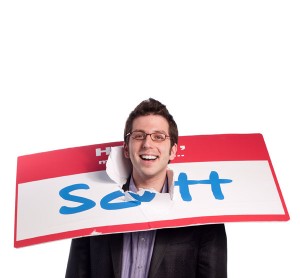A division of Brooklyn United, Brooklyn Digital Foundry directs and produces engaging video and visualization pieces to connect brands with online and offline audiences.
I sat down with Brian Lemond and posted three crucial questions on belonging:
1. Good brands are bought, but great brands are joined. Why do you think your employees join yours?
Both of our businesses, Brooklyn United and the Brooklyn Digital Foundry, have grown up as DIY operations. They were founded on simple things: curiosity about the marriage of design and technology; a desire to make something; and a commitment to busting as much ass as it took. The key thing supporting our brands’ growth, both from a client-side and a recruiting/retention side, is we’ve stayed true to those origins, that ethos. That consistency allows us to be very sincere when presenting the companies, and our audiences recognize that sincerity and want to connect with it.
We often say in the studio that today’s marketplace is about showing off your true self, and having faith there’s an audience for that. We’ve translated that into a handy catch-phrase: Be You. Be Loved.
2. The great workplaces of the world have soul. What do you do to humanize your culture?
The most visible thing on this front is, ironically, a dog named Oscar. A lot of offices in the New York Digital District (NYDD), aka DUMBO, Brooklyn, are pet-friendly, but we wouldn’t trade Oscar for anything.
More officially, we humanize the studio culture by treating people well. We recognize our employees have two agendas: doing a good job for us and realizing their own dreams. We produce better work and have happier employees the more we know about both sides of that equation. So communication is a huge concern for us and we’re always looking for ways to improve our dialogue within the studio. We encourage sharing of information both formally and informally, we make sure periodically the team puts down their mice, laptops, and tablets and chills out, but most importantly, we ask questions and listen to the answers. I think as a result the studio ends up being a reflection of everyone in it; the culture is grown rather than passed down from the top.
3. Belonging is a basic human craving. How do you remind employees that they’ve found a home?
We want to be a part of something, but we want that something to be going somewhere or accomplishing something. In our studio, the indicators/reminders are the very things that define any community — shared experience, recognition of individuals, historical awareness, celebration of accomplishment, and so on. That’s the macro view. At a more granular level, that translates into the simple things like actually caring about each other. When you ask people questions, they can tell when you don’t care about the answer. I’ve worked in offices and with people where that sense of community, that interpersonal connection, was not present. Guess what? I’m no longer at those places and I didn’t bring those people with me.
We spend a great deal of time and energy, much of it just being extremely patient, looking for the right people to join our team. When we find them, we do our level best to let them know we don’t take them for granted. My hope is if we’re clear and open enough about how much we value them — their ideas, their time, their contribution — they’ll feel they’ve found something like a home.
Thanks Brian!

